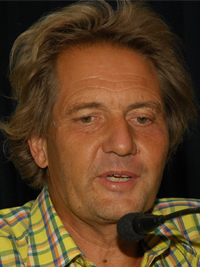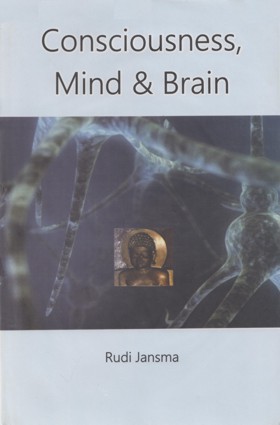A second layer of skeptics we find among the spiritualists themselves. They believe firmly that their information gathered from the séance room represents the after-death state completely. The skeptics among them close themselves completely off from other information about death described in the old scriptures of various religions. Just as the materialists maintain that there is nothing in the universe but physical matter and energy, and just as some near-death-experiencers think that they know everything about dying and death, they are wrong. The near-death experience is only a report of what one's consciousness remembers of the period and processes of departing from the body without however actually departing (and then only that part of it which can be impressed on and remain in the physical memory after reawakening). They can know nothing about what happens after the silver cord is snapped.
According to Tibetan descriptions the period of withdrawal of the prāṇas, which is externally manifested as the stopping of the functions of the sense organs and the getting cold of the body, in the consciousness of the dying person the mind becomes clearer in several steps, where it is losing all its mundane mentalities or tendencies and gains great calmness and increasing clarity.
According to the Tibetans it is just before the total withdrawal of the prāṇas from the body that what they call 'clear light of death' takes place. Most people however never reach that state consciously because the higher stages are too subtle to be perceived by anyone less than a trained yogi or, I think, people who have particular karmic conditions build up in the past. Usually one 'faints' into a dreamless slumber well before that moment. If they do reach that state consciously, and they have pondered the most subtle philosophy without any bias or prejudices when their mind can no longer be deceived or blurred and is totally clear and pure, having lost all attachment to worldly memories, it is the best moment for high meditation within each cycle of birth and death and rebirth. But this is very rare, and for an outsider it is not easy to know how much progress such people made in this meditation. As I understand it only truly great yogis can make use of this situation. Very important choices can be made at that time. After this meditation or the shorter period of remaining in a slumber, their prāṇas withdraw completely form their body and the person is really dead. The prāṇas go where they belong like the electricity in a socket after the lamp has been switched of. There is no more connection between the body and these prāṇas.
That does not mean that there are no other prāṇas. Only the prāṇas which vitalized the body are gone. But there are prāṇas on all levels of subtlety. Every thought, for example, is carried by a prāṇa, also after physical death and the snapping of the cord. Therefore thought and mental activity continues fervently after physical death. Moreover the mind and individual feelings are no longer hindered in their expression by physical matter. Consciousness, therefore, can become more intense and vital after death than before. We have no more physical body then, no more astral model body, nor coarse prāṇas invigoration the physical frame. Consciousness indeed makes full use of subtler matter and subtler prāṇas. Skeptic scientists who call themselves materialist should realize that there are other types of matter than physical matter in one's being, indeed everywhere in the universe. They could try to understand these things by seriously studying ancient scriptures and Theosophy, and then, if they wish, remain materialists and skeptics perhaps we should call them then astral-physical materialists and they can practice their skepticism on that level.
The individual physical prāṇas of the components of the body, its cells etc. become master of the body and bring about its decomposition, helped by germs, worms and other creatures. The body can, after you have really left it, be safely burned or buried, and you, the former inhabitant, will not come back to visit it. Then, in Tibetan Buddhism as well as in ancient Egypt and other cultures, the real after-death experiences are described. Of course, as just said, no medically or naturally resuscitated person can know anything about what happens after the withdrawal of the prāṇas. So for medical science there is nothing to gather here.
The spiritualists however do know something about what happens after the snapping of the silken or silvery thread. Remarkably their reports are entirely different from those of near-death experiencers. Kāmaloka is much more down to earth, may be gloomy, but those 'living' there can produce phenomena that are 'miracles' for us. NDE'ers never perform such 'miracles'. The spiritualists touch a state of being which is astral i.e. where everything is made of a more subtle type of matter than the physical (but still quite coarse). Regrettably most spiritualistic research by parapsychologists and other scientists has not come much further than collecting phenomena. There are uncountable reports about objects moving through the air, and departed person's writing or saying something. They have so far not developed a sound and stable theory based on true understanding of the 'astral' realm.
There is an apparent discrepancy between the results of different scientific investigations: the first concerns the near-death experience, which end when the almost-out-of-the-physical-body person returns to his body. Almost all of them describe amazing experience of light, love, meeting trusted or holy figures on the other side and receiving a warm welcome. In rare cases they describe gloom and absence of love and light and terror, sometimes for a while only to then enter into a light and joyful experience. Many speak of 'heaven' (or 'hell') because these are the concepts they have learned from the culture in which they grew up. But in reality the happy or gloomy experience during near-death have nothing to do with heaven or hell whatsoever. But the study of 'people of the other world' encountered in the spiritualistic setting seems to lead to entirely different conclusions. They don't talk about lights and tunnels and joy and loved ones in beautiful lanscapes or holy beings throwing love and light on them. Actually they show a relatively 'ordinary' way of experiencing life, in which they have personalities, recognizable astral bodies, can communicate with each other, can ask other's assistance and show themselves to the spiritualists in an organized type of life in which there are 'people' with higher and lower statuses, some of whom are commanding and others follow their orders and requests. Two important investigations answering to scientific standards (of that time), one in the village of Chittenden in America registered by Colonel H.S. Olcott in the 1870's[1] and another one more recent in the 1990's in the village of Scole in England in which messages and materialized or physical objects from a number of collaborative spirit communicators are said to have been received. The research has been critically conducted principally by three senior members of the London based Society for Psychical Research. In the course of over 20 sittings the investigators were unable to detect any direct indication of fraud or deception, and encountered evidence favoring the hypothesis of intelligent forces, whether originating in the human psyche or from discarnate sources, able to influence material objects and to convey associated meaningful messages, both visual and aural.[2] Chittenden and Scole show very many common features. The circumstances in which the séances were held, the ways of communication and the type of manifestations and explanations from 'the other side' are special and exceptional. Here the dead communicate consciously and (to a certain extent) intelligently with the living. Someone undergoing out-of-the-body experiences, for example during surgery, can not communicate with the living, though he or she can see the living, and his or her own body laying below on the operation table. But however frantically he or she may try, the living are not aware of them. In the Tibetan book of the Dead (Bardo Thödol) it is described how the truly dead can see the living and their own dead body, and often only then discover that they are dead, because they notice that nobody on earth reacts to their efforts to communicate. This, however, happens after their complete separation from the physical body. The near-death-experience, also known from self-induced near-death experiences in pre-modern Tibet, shows that the seeing of one's own body and the people around them occurs even before the separations takes place. This is confirmed by Tibetan 'déloks', people who know the way of dying and staying death for about a week. They may do this regularly. Also déloks can as a matter of principle never be really dead, because once the connection with the physical body is broken no return is possible and their body would begin to decompose. Also natural near-death experiences are known from Tibet.[3]
Different types of spiritism
It seems that there is quite a gap between ordinary mediumship and the events that took place in Chittenden and Scole. In the last two cases a reciprocal effort was consciously done by both the people on this side of the deadline and those on the other side of it. In fact, in the case of Scole, the kāmarūpas explained to one researcher that the commitment to this research from both sides had already been made before his birth. This would mean that the Scole Experiment was planned by a particular group of entities to prove existence after death to the world in order to weaken materialism and/or fear for death among humanity a deed of compassion. About the experiments in the 19th century, a later Theosophical clairvoyant, C.W. Leadbeater, declared of these experiments also that they had been consciously planned by a group of initiated ex-human beings of a very remote past to enforce some bursts in the rigidity of materialist thinking in that century. However it may be, there is of course no scientifically acceptable proof of the genuineness of these statements. But it seems to me quite clear that there is a distinction between ordinary mediumistic spiritualism in which erratic individual spooks are invoked and 'come through' with mostly rather insignificant and unsystematic information, and the cases of Chittenden (and others) in America and Scole in England.
Olcott's minute study and results he has described in detail in his book People from the Other World' which can be found online in pdf. And has been reprinted in 2010 by Nabu Press (July 30, 2010) ISBN-10: 1176422073 and ISBN-13: 978-1176422070
See: The Scole Experiment, 1999 and The Scole Report, 1999. Further details see Bibliography. Discussions, lectures by scientists and pictures of phenomena of the Scole Experiment can be found online in a number of Youtubes
 Dr. Rudi Jansma
Dr. Rudi Jansma
